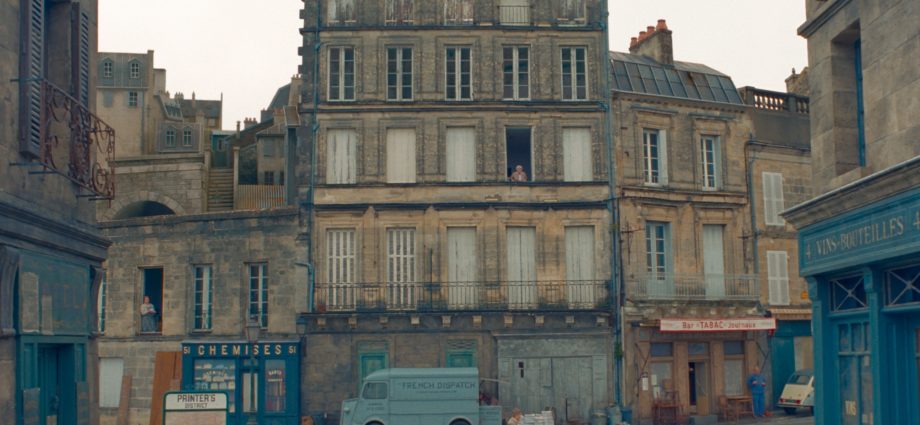On Oct. 22, Searchlight Pictures released Wes Anderson’s tenth feature film “The French Dispatch” to theaters. A love letter to writing, the story follows a fictional French magazine called The French Dispatch and three stories included in its final edition.
More than anything, what makes a Wes Anderson movie so distinct is his use of meticulous framing and detail with the camera. Each action on screen, from the main cast to the extras, is carefully placed to fit the visual direction of Anderson. This keen style comes to play marvelously in scenes like when a writer is ambushed on his bicycle by a group of rowdy choir boys. Albeit simple in its nature, the purposeful straightness and alignment with the center serve to please the viewer’s eyes with each shot.
Even more distinct is the movie’s star-studded cast. Although Wes Anderson does have a history of working with many of these actors on previous films, such as BIll Murray, Frances McDormand, Tilda Swinton, and Owen Wilson, there still are many new faces, like Timothée Chalamet, Jeffrey Wright, and Elisabeth Moss. Each actor is morphed into their roles by Anderson, which creates a cast of unforgettable characters, from a boisterous, young revolutionary to a greedy, rowdy prison art dealer.
The film’s split into an anthology allows for the movie to pay homage to the writers of The New Yorker. Cyclist and journalist Herbsaint Sazerac is inspired by Joseph Mitchell and Lucy Sante, who both wrote about the common people of New York; writer and lecturer J.K.L. Berensen is inspired by the art critic Rosamond Bernier; American journalist Lucinda Krementz is inspired by Mavis Gallant and her writings about the 1968 riots; and the food critic Roebuck Wright is an amalgamation of famous Parisian immigrant James Baldwin and food reviewer A.J. Liebling. Although it may seem as if covering all these subjects would result in a bloated, unfocused film, Anderson manages to weave together these separate stories to bring an engaging viewing experience, as each anthology piece is just short enough to not feel long-winded.
Although all the stories are engaging, the weakest link would have to be Herbsaint Sazarec’s detailed piece about the history of the fictional French town of Ennui-sur-Blasé. Albeit brief, lasting only for 10 minutes of the 1 hour and 49 minute movie, the piece serves as comedic relief where nothing inherently dramatic or tense has happened. At the end of the day, the story in the moment is definitely hilarious, and it is intriguing to see the people of the town and its culture. This aperitif adds nothing to the other stories but acts as a fun way to open the stories up through the film’s emulation of what it feels like to flip through a magazine.
In contrast, the strongest story has to be Roebuck Wright’s “The Private Dining Room of the Police Commissioner,” a review of a police lieutenant’s cooking that goes awry once the police commissioner’s son is kidnapped by gangs in a hot air balloon. The absurdity of having a lieutenant police chef in the first place only highlights the comedic ridiculousness of Anderson’s films and plays to his strengths to glorify what should ultimately be the mundane. My favorite scene has to be the chase scene where the film switches from live action to a beautifully animated sequence, as it both exemplifies the comic nature and exaggerations of writing that come with The New Yorker and Anderson’s ability to navigate different mediums to tell his story in the strongest way possible.
As a whole, ‘The French Dispatch’ is a testament to writing itself, highlighting the zany and crooked ways words can play with our feelings and show us grandiose adventures. From the visuals to the story, the film is just a perfect watch for anyone who wants to have an enjoyable viewing experience.

